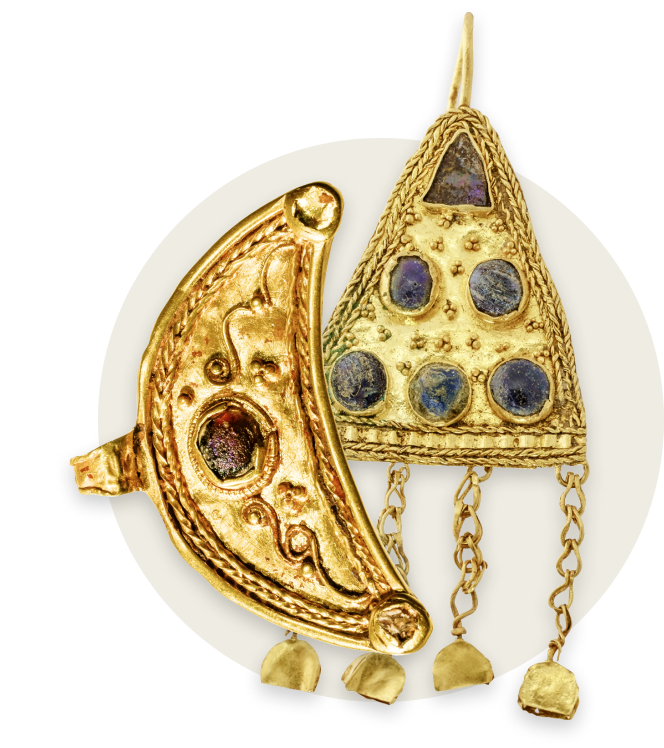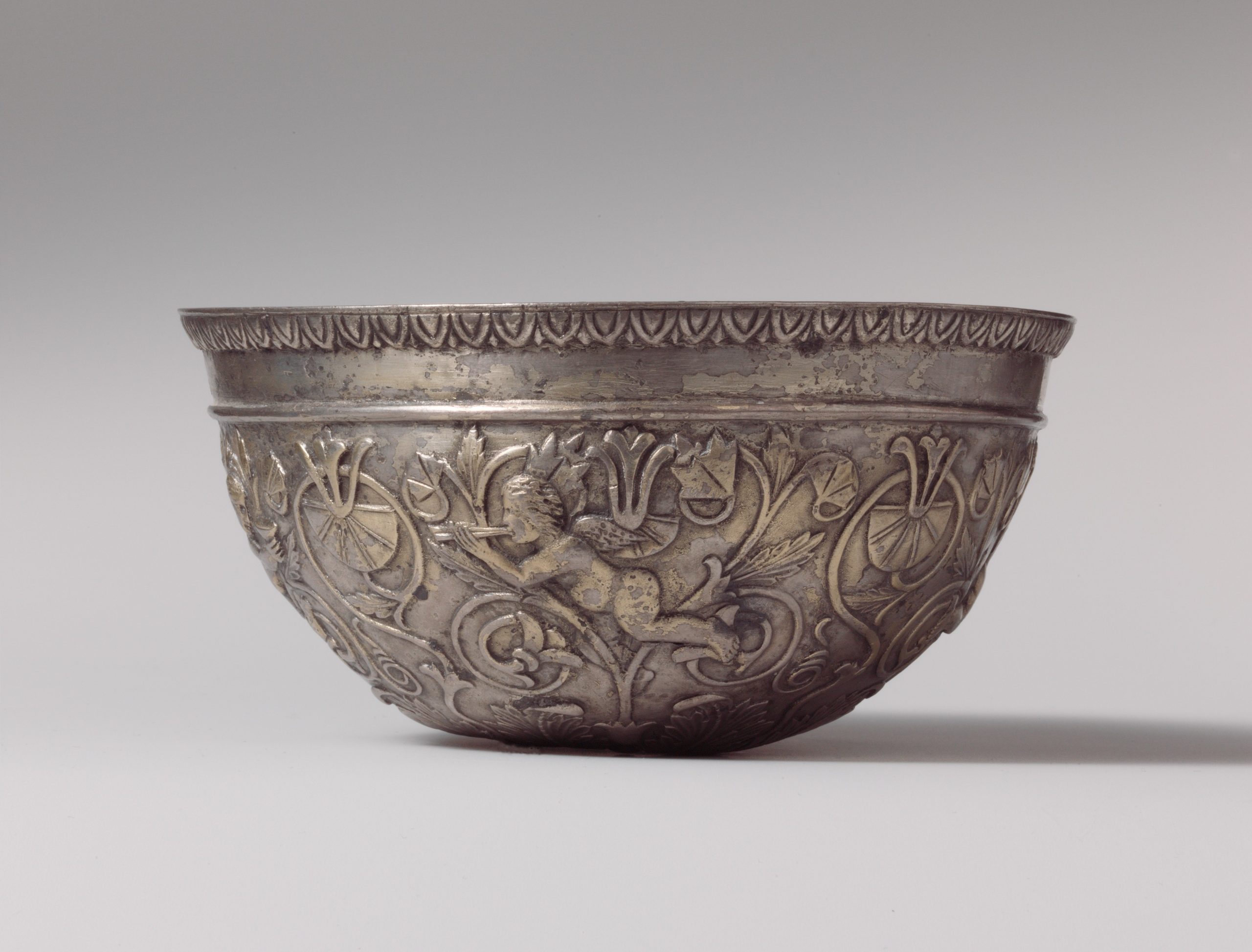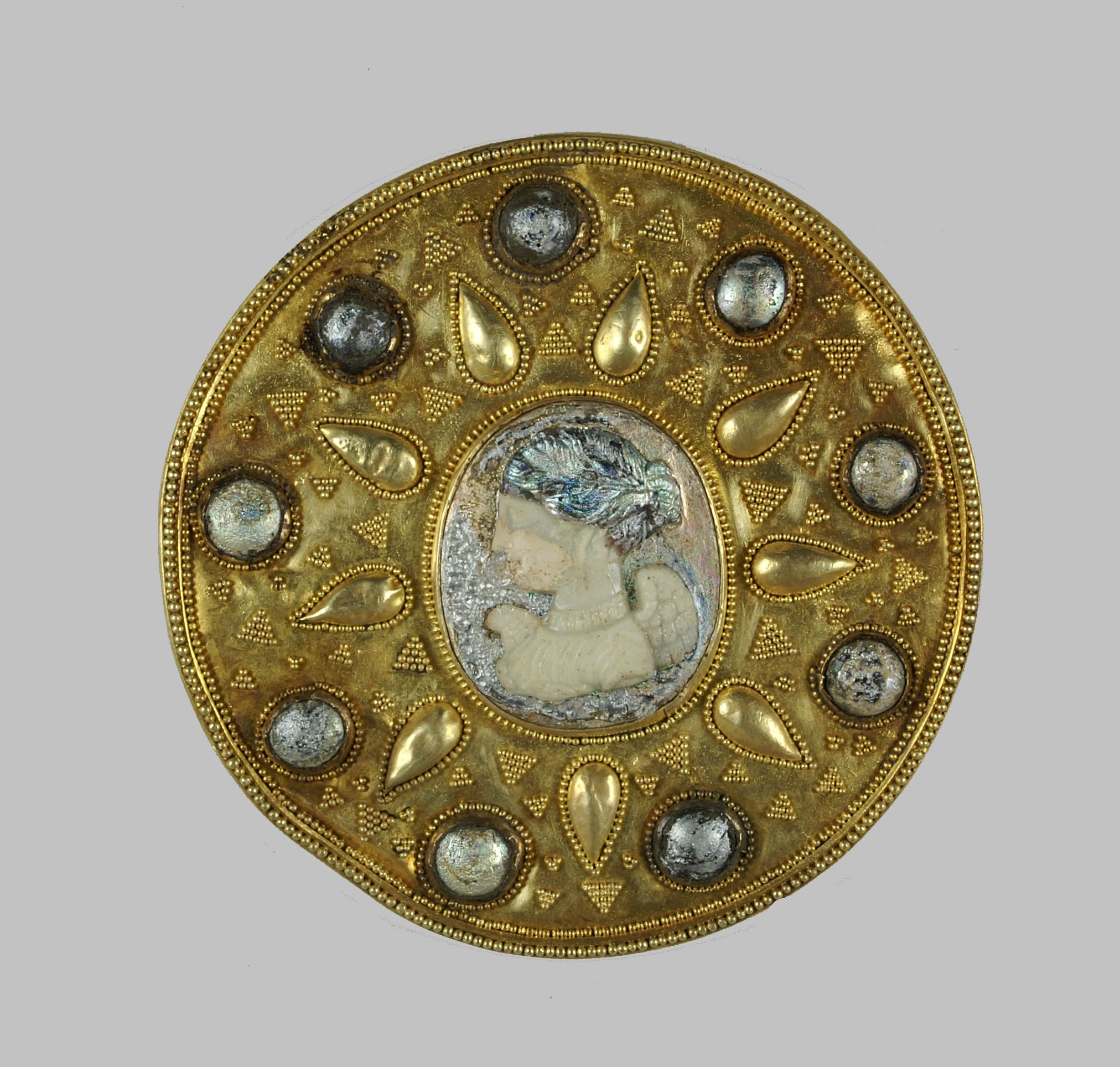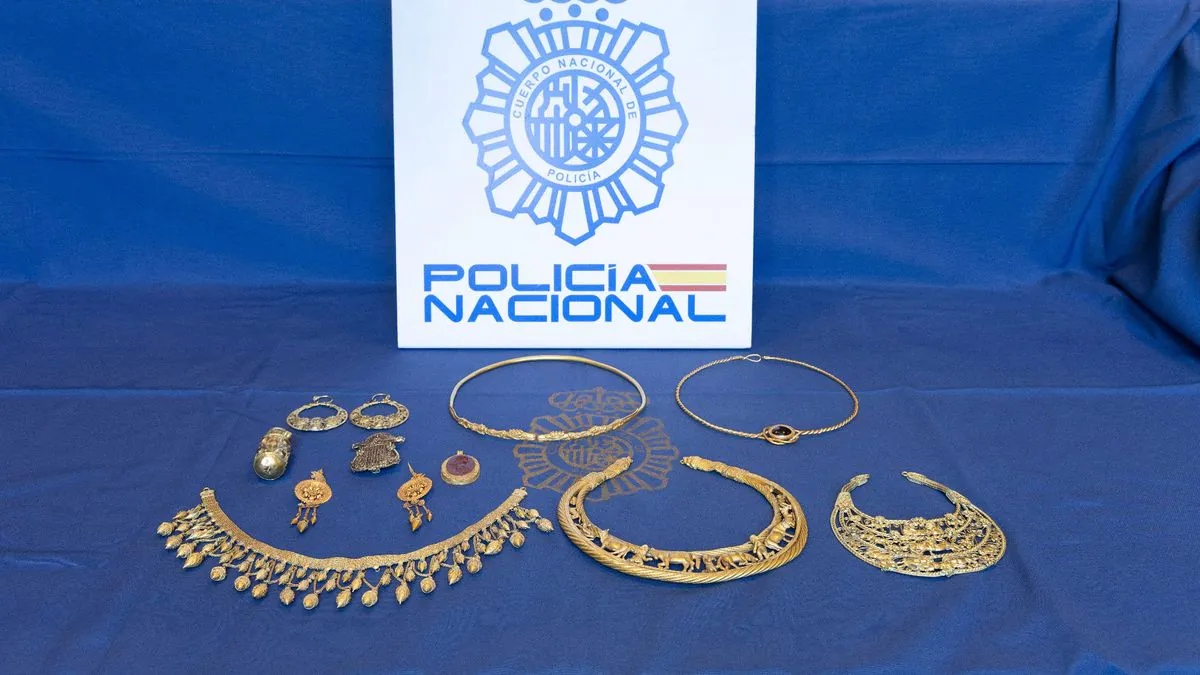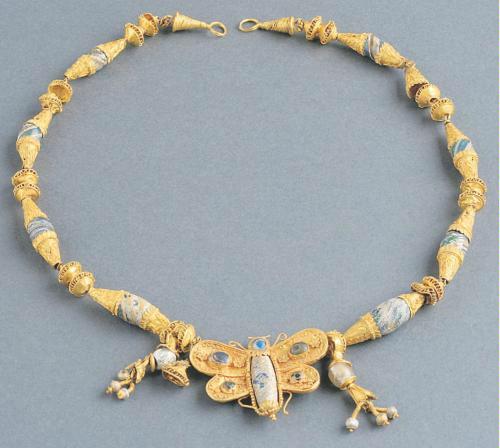
Matrix for minting the applications, bronze, cast, height: 6 cm, width: 4.1-4.5 cm; maximum thickness: 0.8 cm.
Dated 4th-3rd century BCE
Found: Crimea, Alexandrovka village, Belogorsky district, Koltan tract, settlement of the Hellenistic period.
[Село Александровка, Белогорский район, урочище Колтан, поселение эллинистического времени]
“The rectangular matrix has a relief frontal image of a woman sitting in an armchair with carved armrests, which have chiseled bulges in the upper, middle and lower parts.
Her posture is calm, majestic, solemnly motionless. The woman wears a sleeveless tunic with a deep triangular neckline. In the area of the shoulders and at the collar, the tunic is trimmed with piping. Legs are parallel to each other, with slightly apart toes. Between the knees, the tunic is treated with several wide folds. In the lower part, it falls in tails on the shoes. Lush, curly hair parted. They are covered with a light himation, flowing over the woman’s shoulders to the armrests of the chair.
The right hand rests in the abdomen, the left – on the chest. The fingers are carefully crafted. The wrists are decorated with convex bracelets. Traces of damage are visible on the face, possibly due to long-term use of the matrix. The features of the figure and the face testify in favor of the fact that it conveys the appearance of not a young, but a mature woman. Iconographic features make it possible to see the goddess Demeter in the image.
The reverse side of the matrix is smooth. The product is covered with a greenish “noble” patina.
The matrix was intended for the manufacture of large gold appliqués, which, most likely, were details of the ceremonial veils of noble Scythian women.
Analogies: it was not possible to find, as well as gold appliqués imprinted with a similar image.
The date of the matrix is established by the iconographic features of the image.”
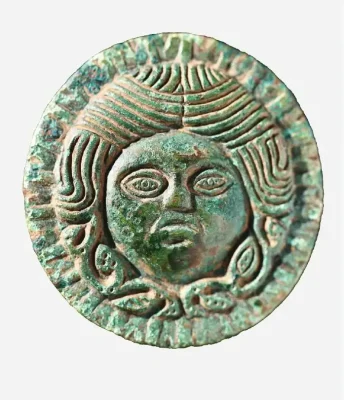
Matrix depicting the head of the Gorgon Medusa.
4th century BCE
Leninsky district, Azov Sea coast.
Bronze, casting, chasing.
matrix diameter: 5.1 x 5.3 cm. Thickness: 0.5 cm.
The matrix has an almost round shape, its vertical diameter slightly exceeds the horizontal one. The working part is a horizontal impression pad 0.1–0.2 mm thick with a relief image protruding 0.3 mm above the surface. The image of Medusa’s head is slightly smaller than the diameter of the matrix. The space between the head and the edge of the matrix is filled with corrugation.
Gorgon Medusa has a rounded face, framed by a neat hairstyle. Almond-shaped eyes, lying in the deepening of the orbits, are underlined along the contour by relief lines that convey the eyelids. Convex pupils, additionally accented with dots, give the whole image additional expressiveness. The superciliary arches are clearly visible, which, merging, pass into a flat, short, subtriangular nose. Cheeks are plump. The nose rests on the upper lip of an arched shape, shown by a thick relief line.
The mouth is very indistinct. Most likely, under the upper lip, with the help of a relief horizontal line, the lower one is conveyed. In that case, the character has a closed or slightly open mouth, the tongue is not shown.
However, the figurative load of a small horizontal notch under the lower lip remains incomprehensible. Perhaps this is a manufacturing defect. But it is possible that the horizontal relief line conveys the tip of the tongue sticking out in the ajar mouth.
The head is framed by a neat hairstyle with a parting in the middle. Neatly combed hair diverges from the parting in opposite directions, turning into curls, falling symmetrically along the sides of the head. From the curls depart shoots with sharp leaves, decorated with dots. They complete the bottom frame of the head.
Analogies: due to the specifics of the image of the mouth, eyes and hairstyle, an exact analogy could not be found. At the same time, the image of gorgoniones was very common in the Scythian antiquities of the 6th-4th centuries BCE, primarily in the form of gold plaques, for the manufacture of which the published matrix served. Researchers note that the image of Medusa evolved from demonic in archaic times “in the direction of “humanization” and giving Medusa the features of a beautiful woman already in the late classical era.”
The published image gravitates precisely to this late image of Medusa, characteristic of the 4th century BCE.
End of the 5th-4th century BCE
Near the village of Mezhgorye, Belogorsky district, Nakhodka, 2013.
Bronze, casting.
Overall length: 2.6; working part diameter: 2.7 × 2.5 cm
“The stamp is an elongated bar with an expanding working part, decorated with an image, and a narrower striking part.
The working part has the form of an oval medallion inscribed with an image of a seated sphinx with a double body, made in high relief. The female head of the sphinx, slightly tilted to the side, is decorated with a low calaf, from under which curly hair is visible. Facial features are not clearly visible: the eyes are highlighted with dots, the nose and mouth are only slightly outlined. Detailed: the lower part of the body (feline predator) – hips, hind and front legs, tail pressed to the back. Folded wings and pectoral plumage are also realistically depicted. The pectoral part of the sphinx stands out most in comparison with the rest of the fantastic creature.
Below, under the image, there are three parallel convex “pigtails”.
On the impact part, slightly flattened on one side, there are visible marks from the blows of the jeweler’s tool. The stamp was intended for the manufacture of plaques, applications, apparently, from precious metals.
Analogies: the image of a sphinx with a double body is widespread in ancient toreutics and is well represented in the antiquities of the barbarian aristocracy of the Northern Black Sea region. Examples of this motif on appliqué plaques are in the Kul’Oba burial mound; Solokha in the steppe zone of the Northern Black Sea region; mound in the Galushino tract near the Pastyrskoye settlement in the Dnieper Forest-Steppe Right Bank.
However, the images on these plaques are conventional and schematic. The closest analogy in terms of realism is a rectangular appliqué with the image of a sphinx found in Taman. According to N.A. Onayko, it presents “a purely Greek interpretation of this motif”. However, it differs in detail from the image on the stamp, which is quite original.”

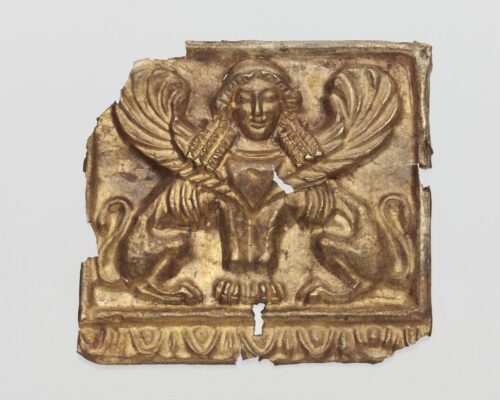
@Hermitage https://www.hermitagemuseum.org
- Roman Zymovets, Скифские древности Крыма, Kyiv 2021 https://www.academia.edu
- Скорый С.А., Зимовец Р.В. [Roman Zymovets] Скифские древности Крыма. Материалы одной коллекции. — К.: Видавець Олег Філюк, Kyiv 2014 https://www.academia.edu
“A catalog of several hundred items of the Scythian culture, discovered, as a rule, under random circumstances in recent years on the territory of the Crimea and made up one of the largest private collections.” - Roman Zymovets, Деметра, Кібела, Велика Богиня. Про атрибуцію образу на матриці з передгірного Криму та “етнографічні” риси деяких культових боспорських зображень. https://www.academia.edu






